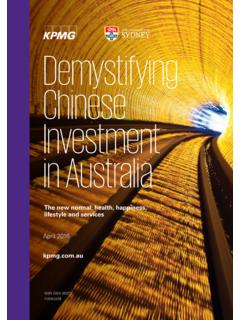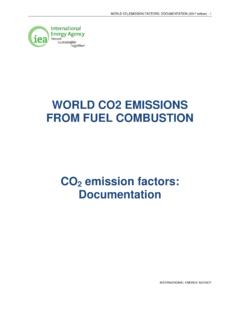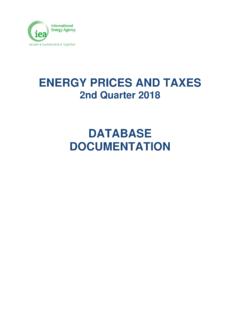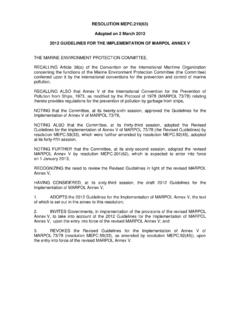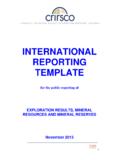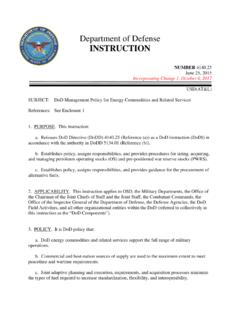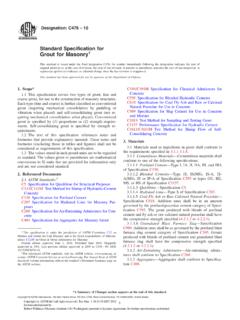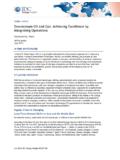Transcription of Demystifying Chinese Investment in Australia
1 Demystifying Chinese Investment in Australia June 2018. ISSN 2203-2037. Australian Prime Minister Malcolm Turnbull (L). and Chinese Premier Li Keqiang (R) pose after meeting in the Great Hall of the People in Beijing. Credit: AP, Mitsuru Tamura. 2018 KPMG, an Australian partnership and a member firm of the KPMG network of independent member firms affiliated with KPMG International Cooperative ( KPMG International ), a Swiss entity. All rights reserved. The KPMG name and logo are registered trademarks or trademarks of KPMG International.
2 Liability limited by a scheme approved under Professional Standards Legislation. Demystifying Chinese Investment in Australia | June 2018 3. About our reports KPMG and The University of Sydney formed a strategic relationship to publish research and insights on doing business with Chinese investors. Our first report was launched in September 2011 and this is the fourteenth Demystifying Chinese Investment report in our series. This report examines Chinese Investment in Australia for the calendar year 2017 and incorporates the latest Chinese Investors in Australia Survey.
3 This special edition provides timely, new insights into the perceptions of the Australian Investment climate by Chinese investors as well as the key challenges they feel they face in Australia . The catalyst for our report series was the lack of detailed factual information about the nature and distribution of China's outbound direct Investment (ODI) in Australia . Without this information, there is misinformation and speculation. Our reports seek to set the record straight and debunk the myths associated with Chinese Investment in this country.
4 Methodology The dataset is compiled jointly by KPMG and The University of Sydney Business School and covers investments into Australia made by entities from the People's Republic of China through mergers and acquisitions (M&A), joint ventures (JV) and greenfield projects. Jones Lang LaSalle (JLL) has provided data and analysis on real estate transactions in the 2017 calendar year. Real estate' referred to in this report does not include residential apartment and private home sales. The dataset also tracks Chinese Investment by subsidiaries or special purpose vehicles in Hong Kong, Singapore and other locations.
5 The data, however, does not include portfolio investments, such as the purchase of stocks and bonds, which do not result in foreign management, ownership or legal control. Our database includes direct investments recognised in the year in which parties enter into legally binding contracts and if necessary, receive mandatory Foreign Investment Review Board (FIRB) and Chinese Government Investment approvals. In certain instances, final completion and financial settlement may occur in a later year. For consistency, the geographic distribution is based on the location of the head office of the Australian invested company and not on the physical location of the actual Investment project.
6 Completed deals which are valued below USD 5 million are not included in our analysis, as such deals consistently lack detailed, reliable information. Unless otherwise stated, the data referred to throughout this report is sourced from the KPMG/. University of Sydney database, and our previously published The University of Sydney and KPMG team obtains raw data on China's ODI from a wide variety of public information sources which are verified, analysed and presented in a consistent and summarised fashion.
7 Our sources include commercial databases, corporate information, and official Australian and Chinese sources including the Australian Bureau of Statistics, FIRB and Ministry of Commerce (MOFCOM) of the People's Republic of China. Our data is regularly updated and continually revised when new information becomes available. In line with international practice, we traditionally record deals using USD as the base currency. However, since 2015 our reports have used AUD for detailed analysis. We believe that the KPMG/University of Sydney dataset contains the most detailed and up-to- date information on Chinese ODI in Australia .
8 1 Includes Australia & China Future Partnership, September 2011; The Growing Tide: China ODI in Australia , November 2011; Demystifying Chinese Investment , August 2012; The Energy Imperative: Australia -China Opportunities, 25 September 2012; Demystifying Chinese Investment in Australia , March 2013; Demystifying Chinese Investment in Australian Agribusiness, October 2013; Demystifying Chinese Investment in Australia , March 2014; Demystifying SOE Investment , August 2014; Chinese Investors in Australia Survey, November 2014; Demystifying Chinese Investment in Australia , May 2015 Update; Demystifying Chinese Investment in Australia , April 2016.
9 Demystifying Chinese Investment in Australia , May 2017; Demystifying Chinese Investment in Australian Healthcare, January 2018. 2018 KPMG, an Australian partnership and a member firm of the KPMG network of independent member firms affiliated with KPMG International Cooperative ( KPMG. International ), a Swiss entity. All rights reserved. The KPMG name and logo are registered trademarks or trademarks of KPMG International. Liability limited by a scheme approved under Professional Standards Legislation.
10 4 Demystifying Chinese Investment in Australia | June 2018. Key findings Chinese Investment in This annual rate Australia declined by of decline in new Investment is less 11% (in USD terms). in 2017, from USD billion than the United States (down 35 percent), Chinese EU (down 17 percent) global ODI fell (AUD billion). and roughly on par with to USD billion (AUD billion). Canada (down 9 percent). 29% in 2017. off historic 2016 levels due to tightened Chinese capital outflow and deal approval regulations.
